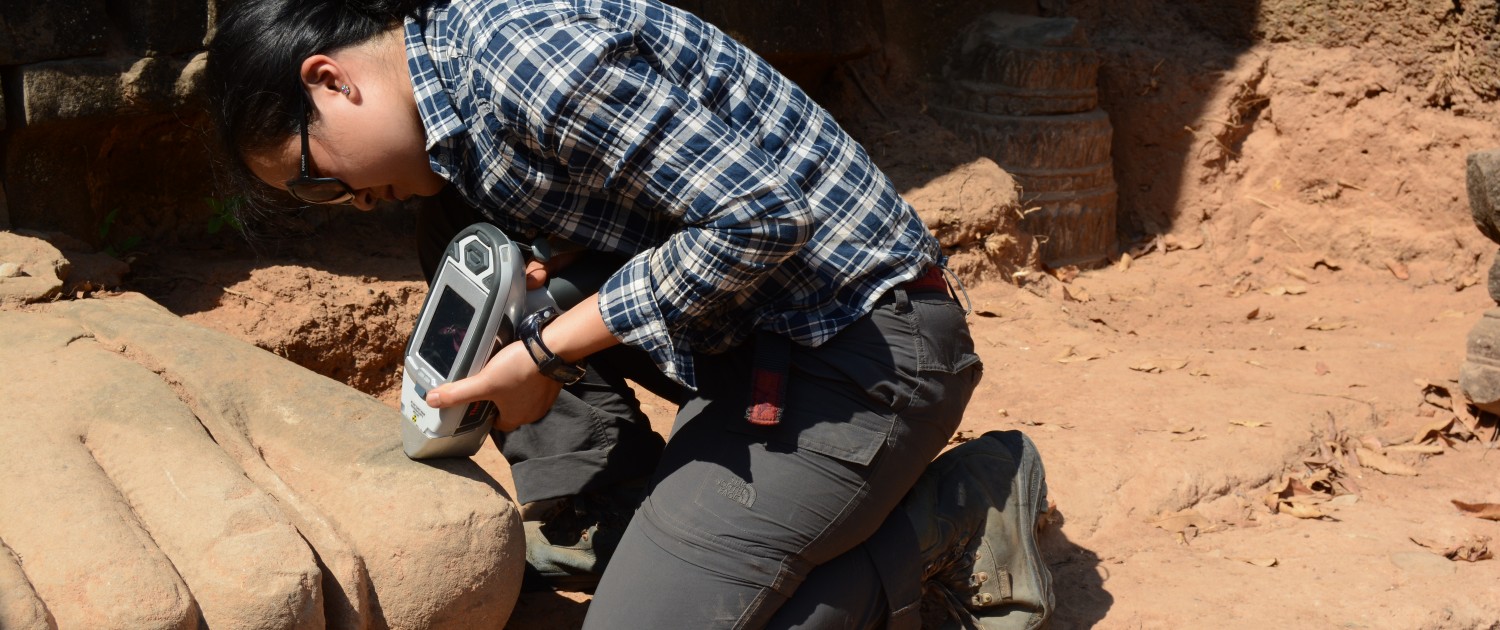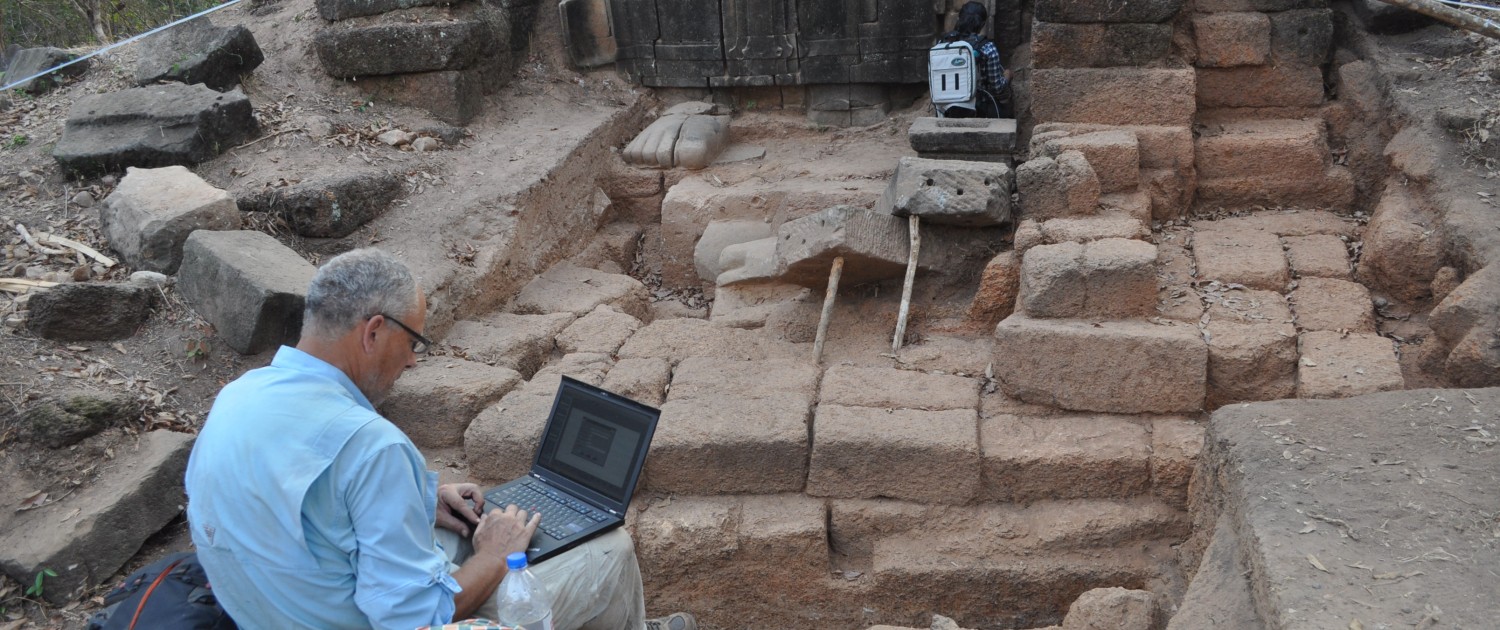
Materials compositional analysis with a Niton XL3t GOLDD+ portable X-ray fluorescence spectrometer (pXRF)
The project seeks to address the economics and sourcing of raw materials through the analysis of the sandstone that was used to build these temples. The scientific methodology will be based on the use of non-invasive technologies consisting of a handheld X-ray fluorescence (XRF) and a portable UV- Vis-NIR spectrometer that allow to collect a large number of compositional data in-situ and have proven very useful for sandstone analysis. These field investigations will be complemented by a more in-depth study in the laboratory on a set of selected samples using techniques such as thin section petrography, SEM-EDS, Raman spectroscopy and LA-ICP-MS. By means of this dual approach, we explore differences in sandstone types and identify regional sources of sandstone material to compare with temples built during the successive architectural phases that in turn are associated with specific kings who may, or may not, have espoused Buddhism.
Particular emphasis is placed on identifying the parent material for Preah Thkol and Preah Chatomukh as these represent distinct examples of Mahayana/Tantrism and Theravada construction, but our study also includes other architectural structures of the Preah Khan complex as well as the sculptures and other stone artefacts that were found there. During the second field season, the pedestals scattered in the 2nd enclosure were studied.
Overall, the comparative analysis of sandstone usage from the 11th to the 12th century and beyond will reveal resource procurement patterns as well as potential changes and, if the latter did occur, especially after the 12th century, whether such changes correspond with historical or regional factors directly related to the shift toward a new religion, providing therefore original insight into Buddhist material culture.
In addition, traces of ancient red and green paints as well as remnants of plaster were recognized in several locations inside the 1st enclosure in the 2016 season. FORS and pXRF analysis point toward the use of red ochre, possibly mixed with red lead, and a copper-containing pigment for the red and green colors, respectively, while the underlying white material is a lime-based plaster. Micro-samples were taken for further laboratory analysis, in particular to investigate the stratigraphy of the paint layers and the nature of the original green pigment.


